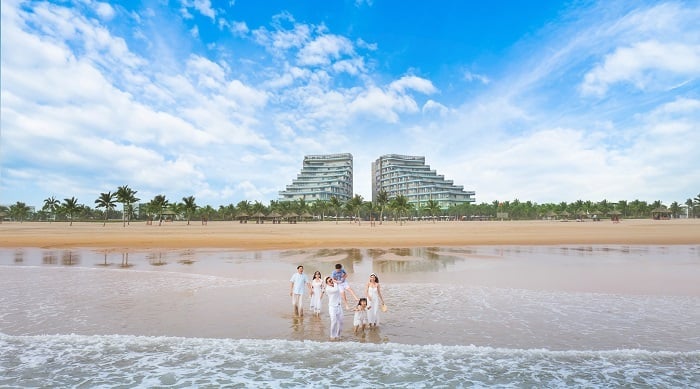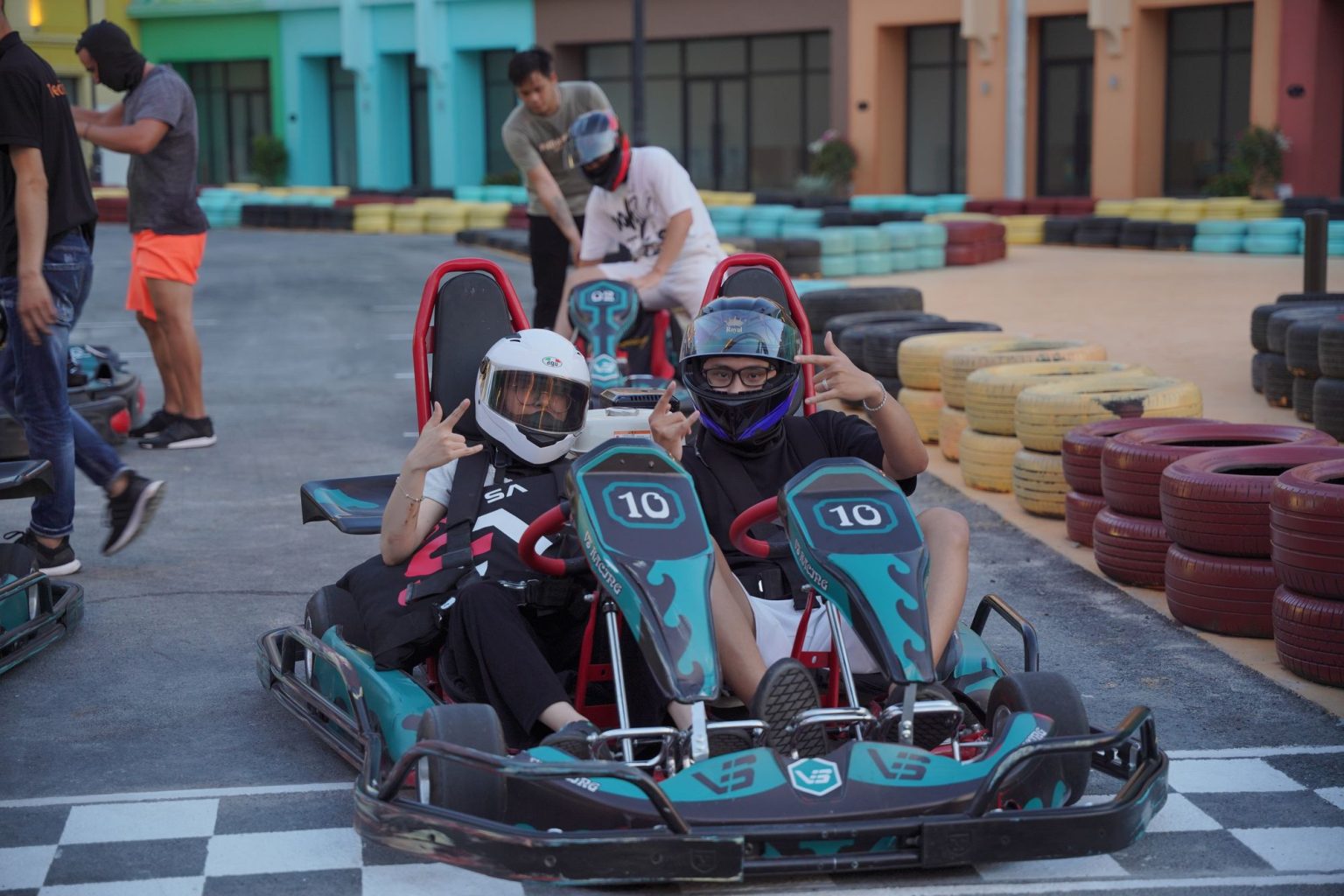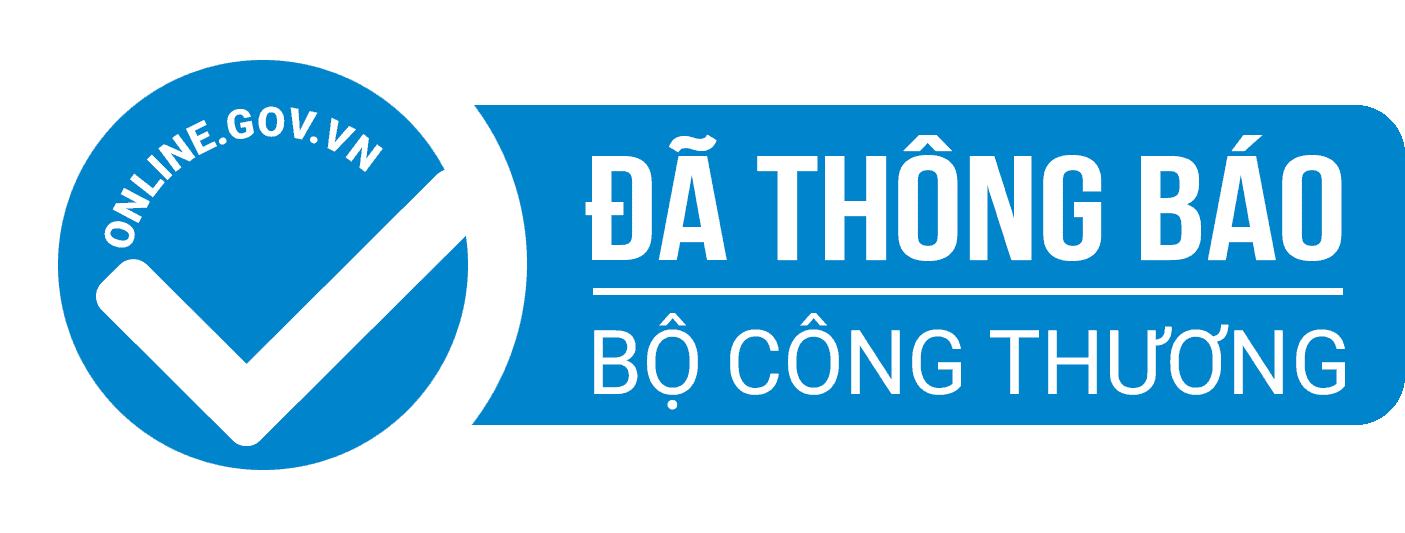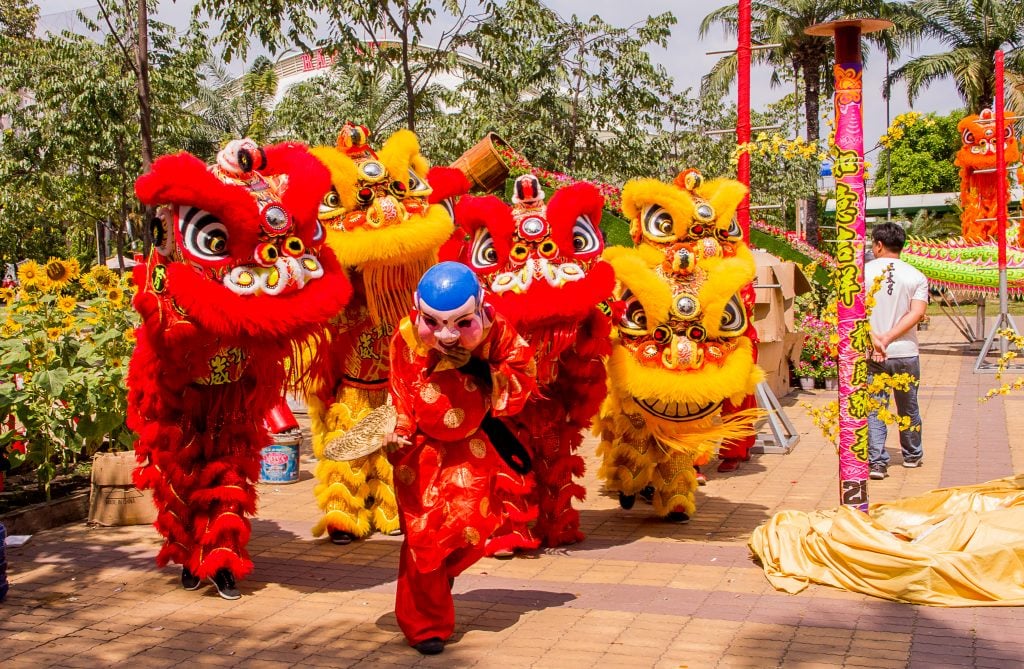
In the heart of Vietnam's rich culture, there exists a captivating art form that has become an indelible part of its heritage - Vietnamese lion dance, also known as Vietnamese dragon dance. This colorful and rhythmic performance is an indispensable element of many special occasions in Vietnamese culture. It not only showcases the country's deep heritage but also brings an air of festivity and unity to gatherings that range from traditional festivals to modern celebrations.
1. Overview of Vietnamese lion dance or Vietnamese dragon dance
1.1. What is Vietnamese lion dance?
Vietnamese lion dance, or Vietnamese dragon dance, is a symbolic performing art that fuses together elements of dance, and theater. This captivating art involves colored lion outfits and skilled movements. To animate a lion moving, two dancers perform in synchrony, imitating the movements of the animal being quick and nimble.
Vietnamese dragon dance indicates blessing for happiness and eradication of bad spirits. It is very important in special events and folk festivals of Vietnam. It not only showcases the artistry of the performers but also serves as a powerful representation of the beliefs deeply rooted in traditional Vietnamese culture. Generations are connected through the timeless beauty of this unique art form.

1.2. History of the lion dance in Vietnam
Lion dancing is an ancient tradition that originated from China. The lion has been venerated in Chinese traditions ever since the time of Confucius along with other Sacred Beasts, including the dragon, turtle, and phoenix.
Legend has it that once upon a time, there was a man-eating beast that appeared every year on the full moon of the eighth lunar month. One day, a monk came to assist the village in eradicating this loathsome trespasser. He had one of his students adorned in a bright red outfit, who repeatedly swung a magical fan to drive back the beast. The other students beat drums and struck gongs loudly to scare the thing off.
From this legend, the Chinese people have made many variations. The fierce beast was changed into a lion, the monk dressed in red was changed to the god of land, and those who beat drums and struck gongs became other performers in a lion dance troupe.

>>> Read more: Public Holidays in Vietnam: The Ideal Time to Unplug, Relax, and Recharge
1.3. Meaning of Vietnamese lion and dragon dance
Lion and dragon dance troupes are often seen during the Tet Holiday, opening ceremonies, and the Mid-Autumn Festival. A lion costume must embody the four revered qualities of the Four Sacred Beasts: the dragon’s jaw, the lion’s nose, the phoenix’s eyebrows, and the turtle’s tail. It must also have fish fins close to its edge which signify triumph (the fish overcoming challenges to become a dragon). It is believed that this dance can bring good fortune and prosperity to people. Thus, it has been an essential part of traditional festivals in Vietnam.
2. Typical features of Vietnamese lion dance
2.1. Vietnamese lion dance costume
Typically, the costume consists of a headpiece resembling a lion's head, complete with expressive eyes and a moving mouth. The headpiece is often adorned with decorative elements such as feathers, faux fur, and colorful fabric, creating a lively and captivating appearance. A fabric-covered structure held together using a wooden or bamboo frame supports the lion’s body, which is usually embellished with fine hanging tassels and bells. The costume is usually bright with predominance of red, gold, green, and blue. Dressed in this costume, the performers move it around with elegance, giving an impression that the lion is alive.
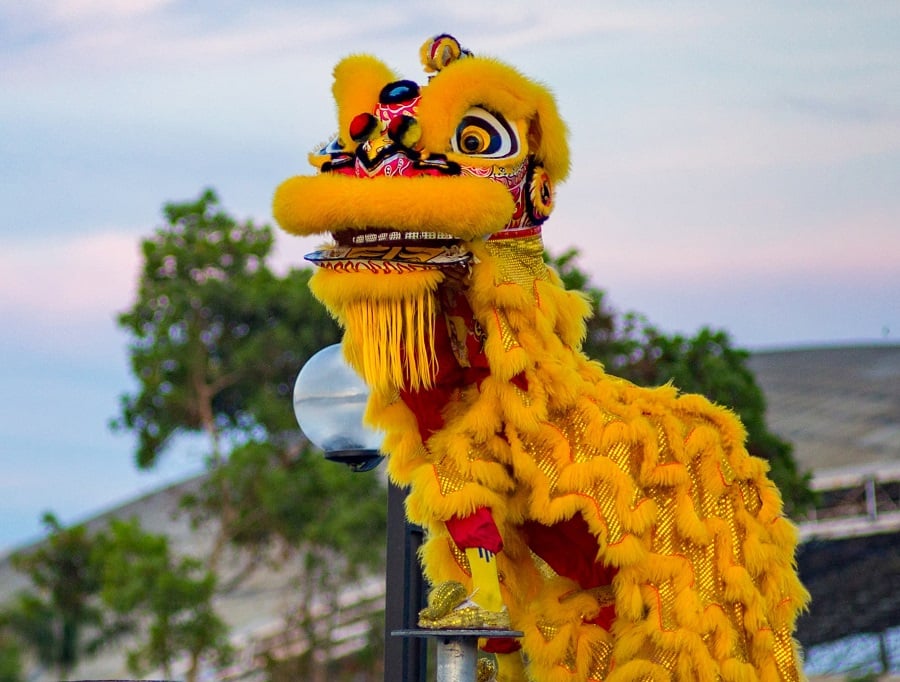

2.2. Vietnamese lion dance music
The music that accompanies Vietnamese lion dance further enhances an already fascinating show. With a fast tempo, the music blends several traditional instruments to create a vibrant track for the lion dance. They usually consist of large drums, cymbals, and gongs. These instruments combine to form a lively sound that is harmonious with the lion dancers’ movements. The music provides more than just background; it also indicates the various activities of the lion. As the lion dance unfolds, the music sets the tone, evoking a sense of festivity and engaging the audience in the cultural significance of the performance.
>>> Read more: Tet Holiday: Guide to understand the heart of Vietnamese traditions
2.3. The performers
Vietnamese dragon dance performers are skilled dancers who breathe life into this fascinating cultural heritage. Lion dances are usually performed by a pair of professional dancers - the first one controls the lion’s head and the second one controls the lion’s body. The two dancers perform coordinated with the dynamic movements of such a big animal. Such coordination requires perfect timing which results in the lion coming to life full of energy.
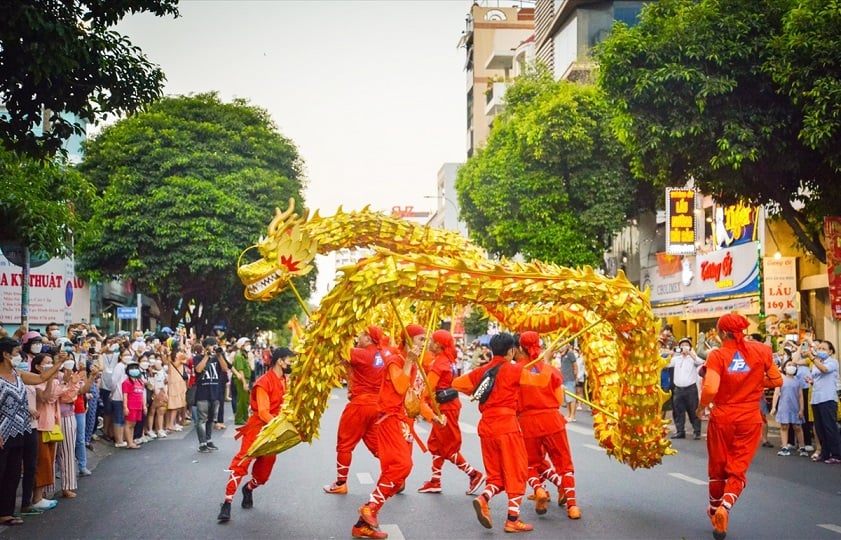
2.3. The movements
The lion dance employs a string of synchronized movements. Usually, they consist of spins, jumps, and other movements performed with ease by the talented dancers. They also incorporate powerful moves that make the lion bow, stretch, or even rear up on its limbs. The simplest moves take the dancers many days to memorize. They must get used to listening to the drums to determine which part of the performance it is and to coordinate smoothly with their teammates.
>>> Explore: Vietnamese folk music: The sounds of culture with a harmony of traditions
3. When to see Vietnamese lion dance?
Vietnamese lion dance is an integral part of various special occasions and cultural celebrations in Vietnam, including:
- Vietnamese New Year: The Lunar New Year, or Tet, is one of the most significant and eagerly awaited times to witness Vietnamese lion dance. This dance is performed to usher in the new year with blessings of good fortune and prosperity.
- Mid Autumn Festival: During the Mid-Autumn Festival which typically falls on the 15th day of the eighth lunar month, the lion dance takes center stage. This festival, also known as the Moon Festival, celebrates the harvest season and features colorful lion and dragon dance performances.
- Vietnamese festivals: Throughout the year, numerous festivals in Vietnam showcase the lion dance as a core element of the festivities. These festivals can vary from region to region and offer a fantastic opportunity to experience the cultural richness of the country.
- Other special occasions: Vietnamese lion dance is not limited to traditional festivals. It also graces special occasions like weddings, grand openings of businesses, and other significant events. It is believed that the lion's energetic dance can bring good luck and ward off negative energies, making it a popular activity for these occasions.
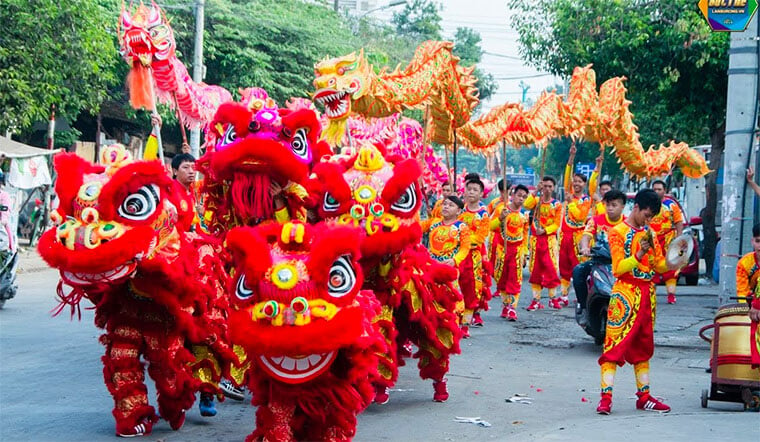
Experiencing Vietnam travel during these special occasions offers a chance to delve into the country's rich culture. Witnessing the vibrant Vietnamese lion dance in Hanoi, Ho Chi Minh City, Phu Quoc, Nha Trang, Hoi An, Ha Long, etc. is just one of the many cultural highlights that will leave you with lasting memories.
For an unforgettable travel experience during these special occasions, you can consider staying at Vinpearl’s resort and hotel chain. Known for the commitment to providing guests with unparalleled comfort and top-notch service, Vinpearl caters to a diverse range of travelers. from those seeking relaxation on pristine beaches to those looking for cultural immersion in historic towns, everyone can have a flawless stay with Vinpearl.
Moreover, don't miss the opportunity to explore VinWonders, an entertainment paradise that promises excitement and adventure for all ages. With parks and various attractions, VinWonders will complement the natural beauty and cultural richness of your trip.

>>> Book rooms in Vinpearl Phu Quoc, Vinpearl Nha Trang, Vinpearl Resort & Golf Nam Hoi An, Vinpearl Resort & Spa Ha Long for a luxury stay!
Vietnamese lion dance stands as a radiant thread that weaves tradition, artistry, and symbolism into the fabric of special occasions. More than an art form, it is a cultural icon that transcends generations, instilling a sense of pride and celebration in the hearts of Vietnamese people. As we delve into the intricate movements of the lion dance, it is evident that this tradition carries the unwavering spirit of Vietnam, making it an indispensable treasure in the nation's cultural tapestry.




